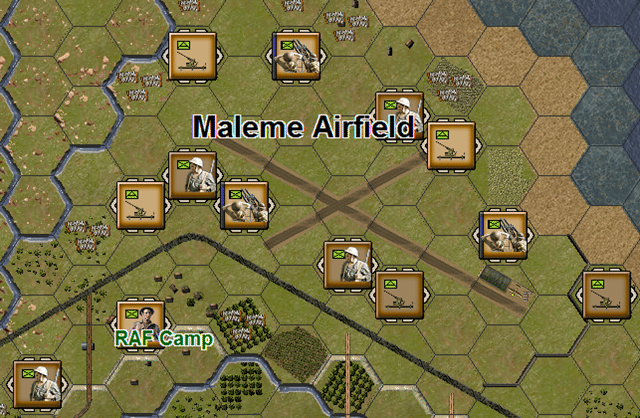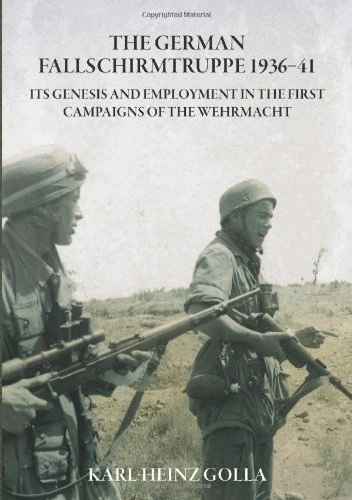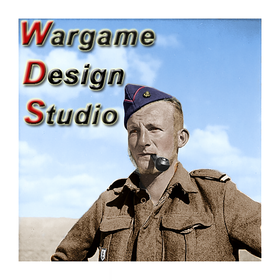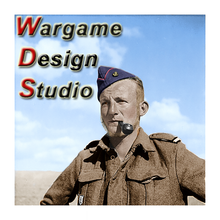So you want to design a Wargame?
As part of a regular series of blogs, we thought it worthwhile taking you through exactly what’s involved in building one of our games. Not surprisingly, there is a lot more work than you would expect!
To provide a practical example, we will take you through the creation of one situation – the German parachute landings around Maleme, Crete in May 1941.

Over the next while we will cover off everything from map creation, order of battle, game & unit art/graphics, scenario creation, game parameters and balancing and possibly even coding.
To kick this week off though we will start off with research. More happens before you open a game editor than happens afterwards. Understanding the topic you’re trying to simulate is critical – otherwise decisions can be made that will have an impact later during game creation and testing.
Research
There are three ‘legs to the stool’ when building a battle. The overall history (what happened and when), who was present (what units, reporting to who) and where did they fight (period maps that show enough fidelity of the terrain and unit placements). It’s usually easy to get the overall history - much more difficult to get the unit and map information – particularly at a scale that is applicable to Panzer Battles – 250 meter hexes and platoon sized units.
We will cover the units and map in future blog posts (sneak peak of an example map below), but rather focus on what is ‘good’ material for the overall history.

For Crete, we’re using a number of key sources for our ‘what happened, when’.
Daniel Davin’s work for the official ‘History of New Zealand in World War Two’ was written in the early 1950’s when many of the participants were still alive;
http://nzetc.victoria.ac.nz/tm/scholarly/tei-WH2Cret.html

Davin’s work is comprehensive with an emphasis at battalion and even company level reporting for both sides. It also has a conclusive order of battle down to the number of officers and men present in each formation and some great daily maps. Better still this is all available online and searchable with significant cross references. Cross references become very important when looking for particular details (more on that in a future blog!). This is definitely a superlative source from the Allied perspective. Both New Zealand and Australia actually published battalion histories after the war and there is a wealth of first person stories and photos in these works - all online and available for free.
Other books such as Antony Beevor’ Crete are good potted histories but not sufficient to build a game - though there are some solid appendices. This is worthwhile as a primer and to get a good feel for the human element.
http://www.antonybeevor.com/previous-books/crete-the-battle-and-the-resistance/

Some other books that were consulted were Pen & Swords Battleground Europe: Crete – the Airborne Invasion 1941, George Forty’s Battle of Crete and Osprey’s Crete and Fallschirmjager titles. These titles all go into significantly more detail on either individual engagements or the organisation and interaction of each sides forces. The detail here helps to shape many of the design decisions that have to be considered in creating a title.
Crete was a battle of ad-hoc forces, under-supplied and in many cases with little communication beyond what they can see. Emulating that in the game will be an important consideration.


A particularly strong source from the German perspective was Karl-Heinz Golla’ The German Fallschirmtruppe 1936-41 from Helion.

More from this particular book when we explain some of the German order of battle decisions. Golla did a great job covering a force that had created history 12 months before in the invasion of France, Belgium and Holland and applied many of those lessons when landing in Crete.
All the above books will help build a good appreciation of the battle from numerous perspectives. They also help the reader to understand what factors such as air power, supply or transport impacted each side in the battle. All had to be read and digested before we even thought of starting scenario design - and this is just a selection of the titles used, many more were consulted.
Until next post when we dive into some of the nuances of building an order of battle for our action in Crete.





Leave a comment